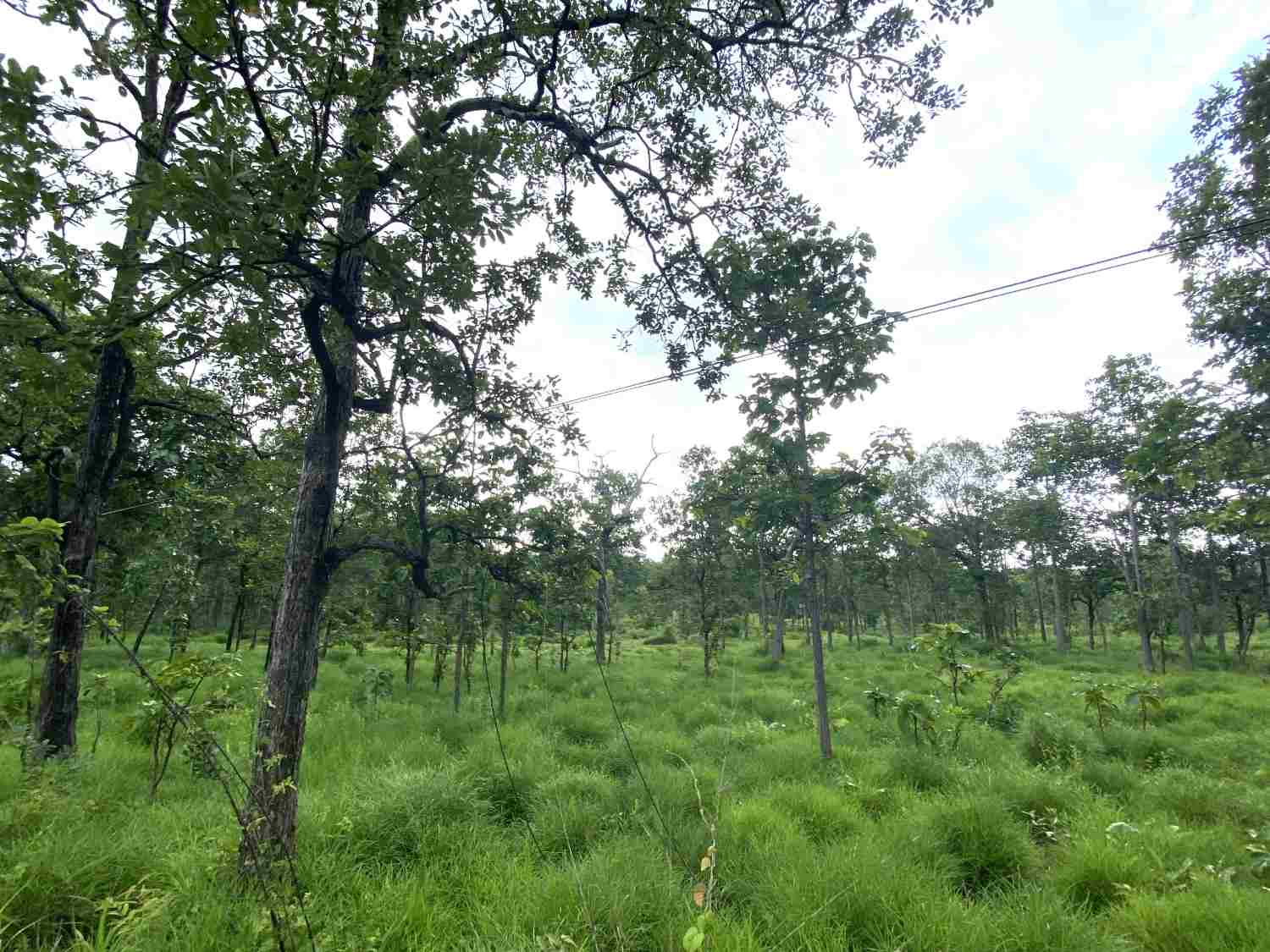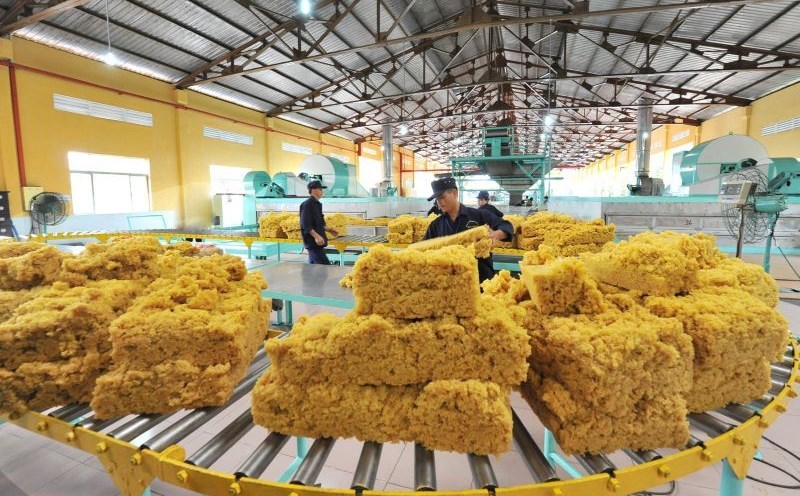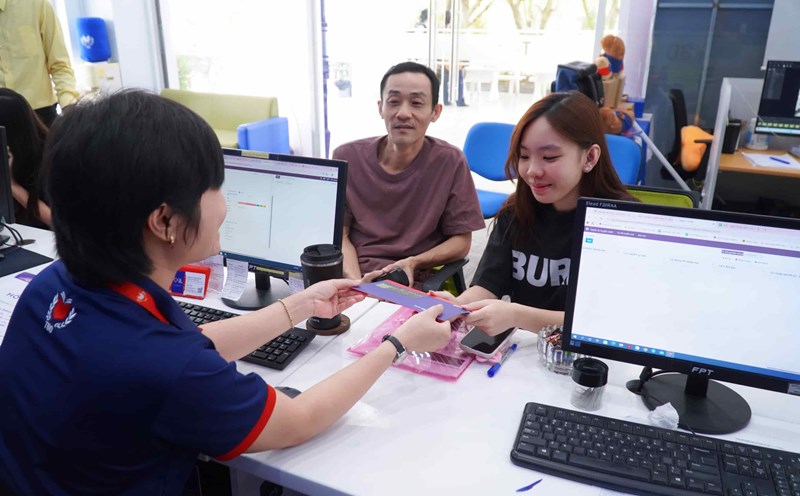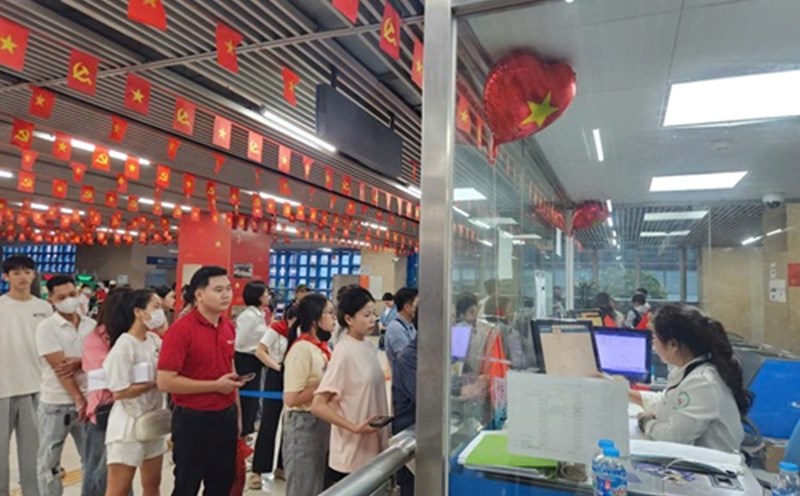In 2008, 50,000 hectares of depleted natural forests in Ia Mo, Ia Puch, Ia Lau, Ia Pia communes... (Gia Lai province) were cut down to implement rubber planting projects, in the hope of creating jobs and improving people's lives.
The People's Committee of Gia Lai province (old) has implemented 44 rubber planting projects for 16 enterprises in Chu Prong, Chu Puh, Ia Grai, Duc Co, Ia Pa. At that time, many border areas became "grand construction sites", trucks and bulldozers were operating densely, leveling trees and land to serve the "white gold" planting.
However, after more than 17 years, these projects have not brought economic efficiency. In the mixed forest land, rubber trees grow stunted horns, gradually dying, and the exploited pus is very low.
According to statistics from the Department of Agriculture and Environment of Gia Lai province, the area of rubber planted by enterprises is 25,541 hectares, of which: 9,008 hectares are growing normally, 14,084 hectares are underdeveloped, 2,448 hectares have died.
A typical example is the project of Quang Duc Export Trading Company, in which more than 2,288 hectares of trees are underdeveloped or have died, accounting for 65.68% of the total project area.

Mr. Thai Hong Nhan - General Director of Quang Duc Export Trading Company - said: "The company and workers have selected rubber varieties, planted and cared for according to the technical process. However, the trees still honked and died.
Meanwhile, the lives of people in the border area have been difficult for many years. Agricultural production is mainly small and fragile; many households lack land for cultivation, and have to sign forest protection contracts to earn income. The situation of encroachment and deforestation to grow rice and crops still occurs, causing complications for security and order.
The working group of the Ministry of Agriculture and Environment and scientists surveyed the actual project area and concluded: The topography of the border area with climate and soil is not suitable for large-scale rubber cultivation. The land is mainly sand or sand mixed with meat, enough for the plants to grow for the first 2-3 years, then there is no longer the ability to grow, leading to the plants dying.
At the end of August 2025, during a recent visit to the border commune and the Ia Mo irrigation project worth 3,000 billion VND, Gia Lai Provincial Party Secretary Ho Quoc Dung proposed to study the plan for businesses to hand over a part of the land to the locality for people to produce. The State will have a mechanism to support businesses to avoid wasting land resources.
Previously, many enterprises have proposed to the Provincial Party Committee and the Provincial People's Committee to allow the conversion of the entire rubber growing area to other agricultural crops, even though this area is included in the forestry land planning.
However, the Ministry of Agriculture and Environment recommends that the conversion of crop structure needs to be carefully calculated and ensured to be effective before expanding on a large scale, the authority to decide on the conversion belongs to the Government.










